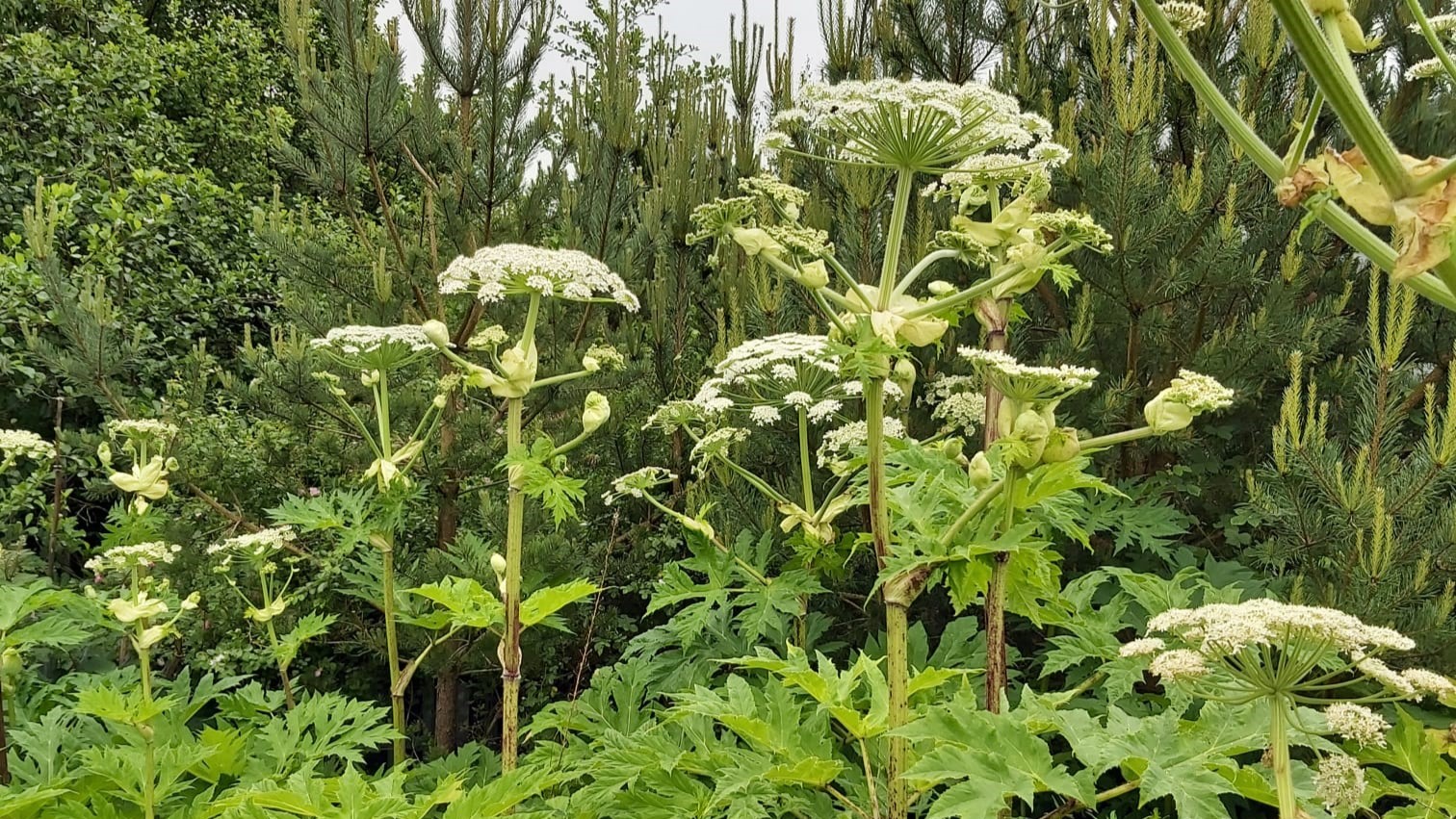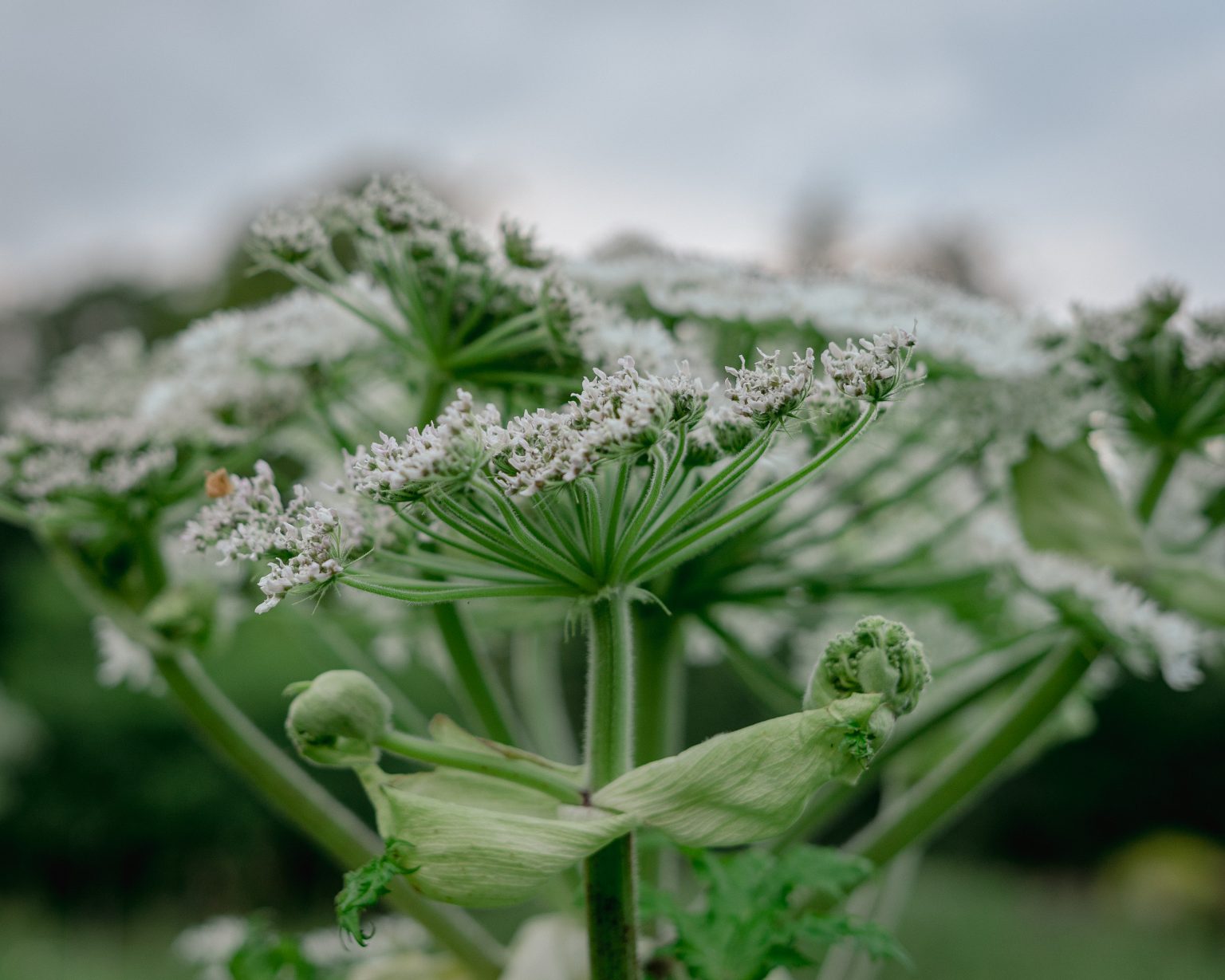Giant Hogweed
Giant Hogweed is a toxic, invasive plant spreading across Scotland. It poses serious risks and requires expert identification and removal.
What is Giant Hogweed?
Giant Hogweed (Heracleum mantegazzianum) is an invasive plant species that can grow up to 5 metres tall, with large, umbrella-shaped clusters of white flowers and a thick, hollow stem. It poses a serious health risk due to its toxic sap, which can cause severe skin burns when exposed to sunlight.
The Origins of Giant Hogweed
Originally introduced to the UK from the Caucasus region in the 19th century as an ornamental plant, Giant Hogweed has since spread uncontrollably, becoming a significant problem in Scotland.
It thrives in damp environments, particularly near rivers, roadsides, and open land, where it easily disperses its seeds.
How Does Giant Hogweed Spread?
Giant Hogweed reproduces exclusively through seeds, with each plant producing up to 50,000 seeds annually.
These seeds can be carried by wind, water, and human activity, making the plant difficult to control. Once established, it can quickly dominate landscapes, outcompeting native species and causing long-term ecological damage.
Issues Caused by Giant Hogweed: Is Giant Hogweed Harmful?
Yes. Giant Hogweed contains toxic sap that can cause phytophotodermatitis, a severe skin reaction that becomes aggravated by sunlight. Contact with the plant may result in painful blisters, burns, and long-term skin sensitivity. Pets and wildlife are also at risk.
Discover our latest blog post about the dangers of Giant Hogweed.
What Should You Do If You Touch Giant Hogweed?
If you come into contact with Giant Hogweed:
- Wash the affected area immediately with soap and cold water.
- Cover the affected skin and avoid sunlight exposure.
- Seek medical advice.
Identification of Giant Hogweed Throughout the Year
Seasonal Growth Cycle:
- Spring: Dark green, spiky leaves emerge, reaching up to 50cm tall.
- Summer: Stems develop, with purple blotches and flower heads growing up to 50cm wide.
- Autumn: Mature plants die back, leaving brittle stems and dispersing thousands of seeds.
- Winter: Dead hollow canes remain visible but require professional identification due to similarities with other plants.
Detailed Giant Hogweed Plant Characteristics
- Stems: Green with purple blotches, thick, hollow, and covered in bristly white hairs.
- Leaves: Large, jagged, and deeply lobed, reaching up to 1.5m wide.
- Flowers: White, forming large umbrella-like clusters, blooming from late spring to mid-summer.
- Seeds: Small, brown, oval-shaped, and capable of remaining viable in soil for up to five years.
Treatment and Control of Giant Hogweed
How to Remove Giant Hogweed Safely
Giant Hogweed removal requires expert knowledge and specialist equipment. At JBB Knotweed Solutions Ltd, we provide safe and effective management plans to control and eradicate Giant Hogweed across Scotland.
Book a survey today with JBB Knotweed Solutions to take the first step towards a Giant Hogweed free environment.
Our Treatment Methods
- Herbicidal Treatment: Targeted foliar application is an effective method but may require multiple growing seasons for complete eradication.
- Mechanical Removal: In some cases, physical removal is necessary. Due to the plant’s toxic properties, this method requires strict safety measures, including exclusion zones and washing facilities.
Book a Survey
Book a survey today with JBB Knotweed Solutions to take the first step towards a Giant Hogweed free environment.
More from JBB Knotweed Solutions



